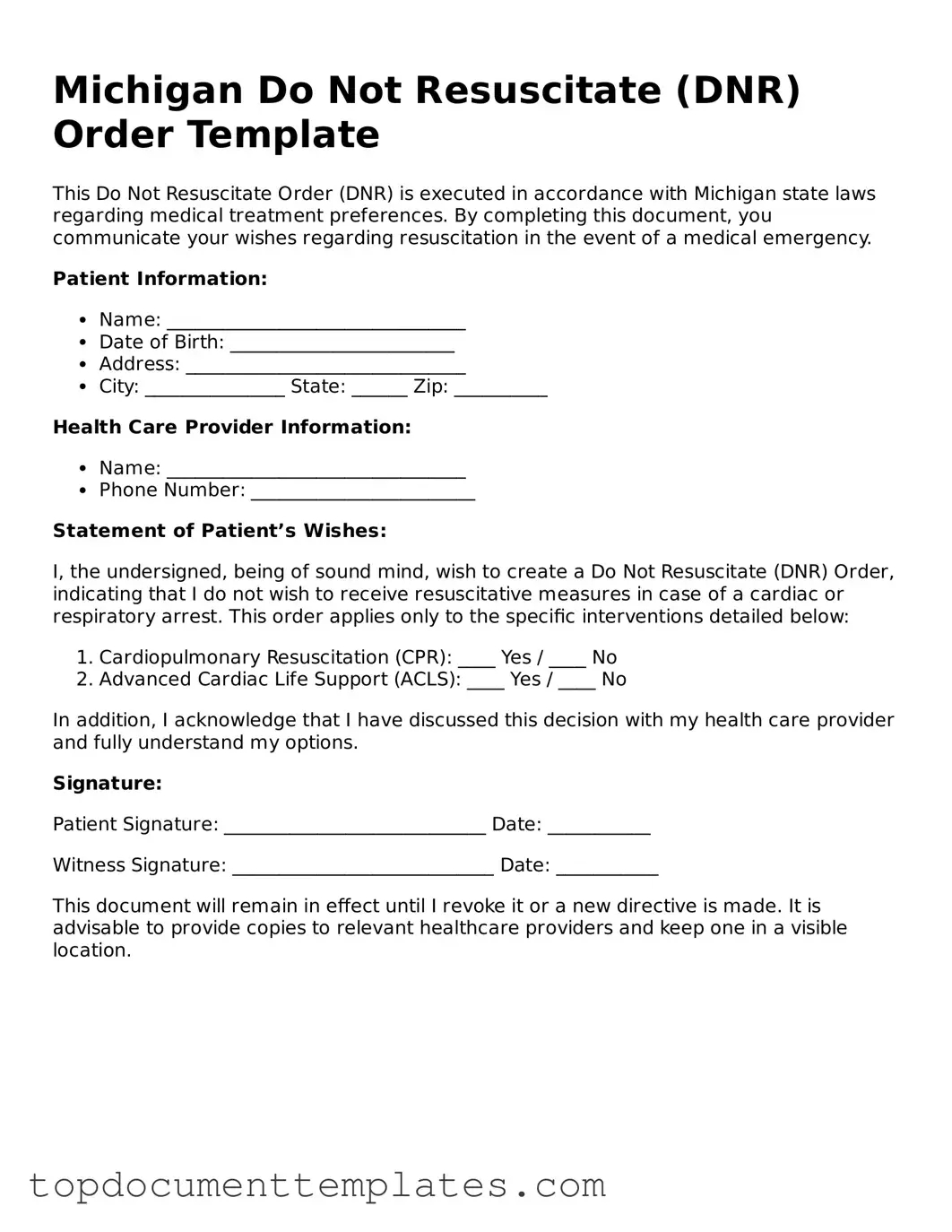Valid Do Not Resuscitate Order Form for Michigan State
A Michigan Do Not Resuscitate Order (DNR) form is a legal document that allows individuals to express their wishes regarding resuscitation efforts in the event of a medical emergency. By completing this form, patients can communicate their desire to forego life-saving measures, ensuring that their preferences are honored by healthcare providers. Understanding the implications of this decision is crucial, and for those considering it, filling out the form can provide peace of mind.
Take control of your healthcare decisions by filling out the Michigan Do Not Resuscitate Order form today. Click the button below to get started!
Open This Form
